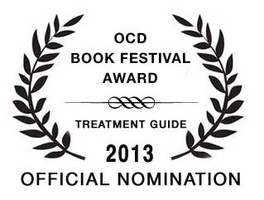
Obsessive Compulsive Disorder (OCD)
Symptoms of OCD:
OCD is a disorder involving recurrent obsessions and compulsions. Obsessions are persistent ideas, thoughts, impulses, or images that are experienced as intrusive and inappropriate and that cause marked anxiety or distress. Some common obsessions are related to contamination, order, symmetry, doubts, and fear of doing harm to self or others unintentionally. Compulsions are repetitive behaviors or mental acts meant to prevent or reduce anxiety or distress. The most common compulsions involve washing, cleaning, ordering, checking, praying, counting, and repeating actions. While these are common examples, OCD fears vary in their content of disturbing thoughts. OCD interferes with daily life activities, is time-consuming, and creates high emotional distress.
Treatment of OCD:
OCD is a very treatable illness when individuals are receiving the most advanced treatment called Exposure and Response Prevention (ERP). Studies show that ERP is the most effective treatment, the first line of intervention for OCD, and has the lowest rate of relapse. ERP helps individuals with OCD develop new ways of coping with obsessions to dramatically reduce the frequency and intensity of obsessions, while eliminating the need for compulsions and avoidance. ERP involves facing actual situations as well as imagined situations (e.g., imaginal exposures), approaching least-to-most distressing situations in a systematic, organized manner.
Examples of therapy goals for treating OCD:
- Step-by-step guide based on your individual manifestation of OCD.
- Identifying triggers for obsessive thinking and ritualizing.
- Understand OCD feelings, urges, and behaviors.
- Exposure/Response Prevention Therapy-In vivo and imaginal exposure to learn to face fears or discomfort.
- Learning to break the cycle of fear and endless rituals.
- Reducing avoidance behaviors.
- Cognitive therapy to replace exaggerated, fearful thinking with more realistic and healthy thinking.
- Step-by-step coping tools and problem-solving strategies.
- Develop coping strategies to manage stressful situations.
- Family education.
- Relapse prevention strategies.



